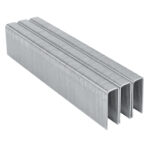Resetting your Asus monitor can fix display issues and restore default settings. To reset an Asus monitor, access the on-screen display (OSD) menu, navigate to the System or Reset option, and select Factory Reset. This process may vary slightly between models, but most Asus monitors follow a similar pattern.
Many users find themselves needing to reset their Asus monitor when faced with color problems, screen flickering, or after making unwanted changes to display settings. Knowing how to perform a reset can save time and frustration when troubleshooting display issues.
Before resetting, it’s wise to note your current settings in case you need to reapply them later. The reset will erase all custom configurations, returning the monitor to its out-of-the-box state. This can be particularly helpful if you’re unsure what changes might be causing problems.
| Reset Method | When to Use | Difficulty |
|---|---|---|
| Soft Reset | Minor issues | Easy |
| Factory Reset | Major problems | Medium |
| Hardware Reset | Unresponsive | Hard |

Resetting Your ASUS Monitor
If you’re experiencing issues with your ASUS monitor like display problems, unresponsive buttons, or incorrect settings, a factory reset might help resolve them. Here’s how to restore your ASUS monitor to its original settings:
Using the On-Screen Display (OSD) Menu
Most ASUS monitors have an OSD menu that allows you to access various settings, including the factory reset option.
- Turn on your monitor: Make sure your monitor is powered on and connected to a video source.
- Access the OSD menu: Press the Menu button on your monitor. This button is usually located on the back or bottom of the monitor.
- Navigate to System Setup: Use the navigation buttons on your monitor to find the System Setup or similar option in the OSD menu.
- Select Factory Reset: Choose the Factory Reset or All Reset option.
- Confirm the reset: Confirm your selection when prompted.
Your monitor will now restart and revert to its factory default settings.
Using the Splendid Video Preset Mode (If Available)
Some ASUS monitors have a Splendid Video Preset mode that includes a factory reset option.
- Access the Splendid menu: Press the Splendid button on your monitor.
- Select Standard Mode: Choose the Standard mode option. This will often reset the monitor to its default settings.
Important Notes
- Menu button location: The location of the Menu and Splendid buttons may vary depending on your specific ASUS monitor model. Refer to your monitor’s user manual for the exact location of these buttons.
- Navigation buttons: The navigation buttons on your monitor might be labeled with icons or arrows. Use these buttons to move through the OSD menu and select options.
- User manual: If you’re having trouble finding the factory reset option in the OSD menu, consult your monitor’s user manual for specific instructions.
| Reset Method | Steps |
|---|---|
| OSD Menu | Press Menu button, navigate to System Setup, select Factory Reset |
| Splendid Mode (if available) | Press Splendid button, select Standard Mode |
By following these steps, you can reset your ASUS monitor to its factory default settings, which can often resolve common issues and improve performance.
Troubleshooting Tips
- No OSD menu: If you can’t access the OSD menu, try checking the monitor’s buttons to ensure they are not stuck or damaged.
- Incorrect settings after reset: If the settings are still incorrect after the reset, try adjusting them manually through the OSD menu.
- Persistent issues: If you continue to experience problems with your ASUS monitor after trying these steps, contact ASUS support for further assistance.

Preparation for Reset
Before resetting your ASUS monitor, it’s crucial to check connections and understand reset types. This ensures a smooth process and helps you choose the right method.
Checking Monitor Connectivity
Start by examining all cables connected to your ASUS monitor. Ensure the power cord is securely plugged into both the monitor and a working outlet. Check the signal cable connecting your monitor to the computer. This could be VGA, HDMI, or DisplayPort.
If you see a “No Signal” message, try switching the input source. Press the monitor’s menu button and navigate to the input selection option. Cycle through available inputs to find the correct one.
Verify that your graphics driver is up to date. Outdated drivers can cause display issues. Visit your graphics card manufacturer’s website to download the latest version.
Understanding Reset Types
ASUS monitors offer two main reset options: soft reset and hard reset. A soft reset is less drastic and doesn’t change your settings. To perform a soft reset:
- Turn off the monitor using the power button
- Unplug the power cord
- Wait 30 seconds
- Plug the power cord back in
- Turn on the monitor

A hard reset reverts all settings to factory defaults. This is useful for more persistent issues. The method varies by model, but typically involves:
- Accessing the on-screen display (OSD) menu
- Navigating to the system or reset options
- Selecting “Factory Reset” or a similar option
| Reset Type | Effect on Settings | When to Use |
|---|---|---|
| Soft Reset | No changes | Minor glitches |
| Hard Reset | Reverts to default | Persistent problems |
Choose the reset type that best fits your situation. Start with a soft reset for minor issues before attempting a hard reset.
Performing a Factory Reset
Resetting your Asus monitor to factory settings can resolve display issues and restore default configurations. This process varies slightly depending on your specific model but generally involves accessing the on-screen display (OSD) menu or using hardware buttons.
Using OSD Menu
To reset your Asus monitor using the OSD menu:
- Press the Menu button on your monitor
- Navigate to the System or Setup section
- Look for an option labeled “All Reset” or “Factory Reset”
- Select this option and confirm your choice
Some models may require you to use a joystick button at the back right of the monitor to navigate the menu. If you can’t find the reset option, consult your monitor’s manual for specific instructions.
After confirming the reset, your monitor will revert to its original settings. This includes brightness, contrast, color settings, and input selections.
Reset via Hardware Buttons
If the OSD menu is inaccessible, you can try a hardware reset:
- Turn off your monitor
- Unplug the power cable
- Wait 30 seconds
- Press and hold the Power button for 5 seconds
- Plug the power cable back in
- Turn on your monitor
This method can help if your monitor is frozen or unresponsive. It’s less common but can be effective when software methods fail.
| Reset Method | Pros | Cons |
|---|---|---|
| OSD Menu | Precise control, Preserves some settings | Requires menu access |
| Hardware Buttons | Works when monitor is unresponsive | May reset all settings |
Remember to note your preferred settings before resetting. This will help you quickly reconfigure your monitor afterward.
Post-Reset Configuration
After resetting your Asus monitor, you’ll need to adjust settings and update drivers. This ensures optimal performance and display quality for your specific needs and hardware.
Adjusting Display Settings
Start by accessing the monitor’s on-screen display (OSD) menu. Press the menu button, usually marked with horizontal lines. Navigate to the display settings section.
Adjust the resolution to match your screen’s native resolution. This typically provides the sharpest image. Set the refresh rate to the highest supported value for smooth visuals.
Fine-tune brightness and contrast for comfortable viewing. Adjust color settings if needed. Many Asus monitors offer preset color modes for different uses like gaming or office work.
Enable features like adaptive sync if your graphics card supports it. This reduces screen tearing in fast-moving content.
Updating System and Graphics Drivers
Outdated drivers can cause display issues. Update your operating system first. For Windows, go to Settings > Update & Security > Windows Update.
Next, update your graphics drivers. For NVIDIA cards, use GeForce Experience. AMD users should use Radeon Software. Intel integrated graphics updates come through Windows Update.
Visit your graphics card manufacturer’s website for the latest drivers if automatic updates fail. Download and install the correct version for your GPU model and OS.
Restart your computer after driver updates. This ensures all changes take effect properly.
| Setting | Recommendation |
|---|---|
| Resolution | Native (e.g., 1920×1080) |
| Refresh Rate | Highest supported (e.g., 144Hz) |
| Adaptive Sync | Enabled if supported |
| Color Mode | sRGB for general use |
Frequently Asked Questions
ASUS monitors may sometimes require resets or troubleshooting. Here are answers to common issues users face with their ASUS displays.
What steps are needed to perform a factory reset on an ASUS ProArt monitor?
To factory reset an ASUS ProArt monitor:
- Press the Menu button
- Navigate to “System Setup”
- Select “All Reset”
- Confirm by choosing “Yes”
The monitor will revert to default settings. This process clears all custom configurations.
How can you perform a factory reset on an ASUS monitor when the menu is inaccessible?
When the menu is unreachable:
- Turn off the monitor
- Press and hold the Menu button
- Turn on the monitor while holding the button
- Release after 10 seconds
This method often bypasses menu access issues and initiates a reset.
What procedure should be followed to address an ASUS monitor displaying a black screen without menu access?
For a black screen without menu:
- Unplug the power cord
- Wait 30 seconds
- Reconnect and power on
- If unsuccessful, check cable connections
This power cycle can resolve display issues.
How do you resolve an ASUS monitor that is not turning on automatically?
To fix auto-power issues:
- Check power cord connections
- Ensure the outlet works
- Press the power button for 10 seconds
- If needed, try a different power cable
These steps often resolve power-related problems.
What are the troubleshooting methods for an ASUS monitor that receives no signal via HDMI?
For HDMI signal problems:
- Check cable connections
- Try a different HDMI port
- Test with another device
- Update graphics drivers
These actions can restore HDMI connectivity.
What can be done if the menu button on an ASUS monitor is not functioning properly?
When the menu button fails:
- Clean the button area
- Perform a power cycle
- Check for firmware updates
- Contact ASUS support if issues persist
Regular maintenance can prevent button malfunctions.
| Issue | Quick Fix |
|---|---|
| Black Screen | Power cycle |
| No Signal | Check connections |
| Menu Inaccessible | Force reset |
| Auto-Power Failure | Inspect power cord |
| HDMI Problems | Try different ports |
| Button Malfunction | Clean and update |




